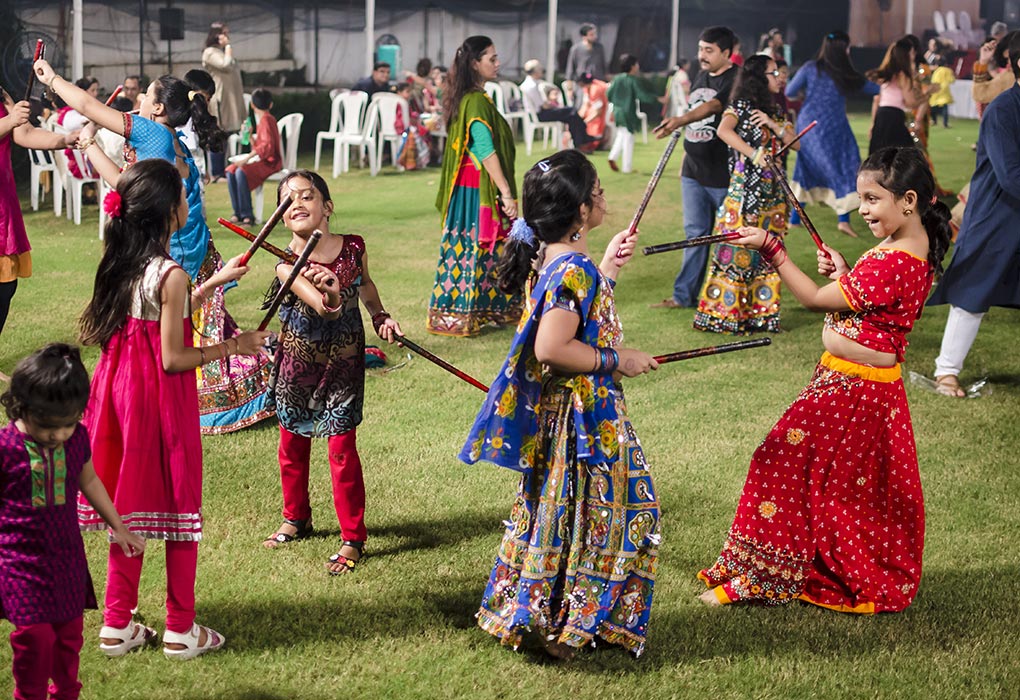Navratri is celebrated by communities gathering for dances and night entertainment festivals. In India and now all over the world, Navratri is celebrated in different ways, in colourful and elaborate ways. One of the dances that can be seen during the nine days is the Garba, originating from the Indian region of Gujarat. Traditionally, it involves dancing in a large circle around a central lamp or images/statues of goddesses. The circle represents the Hindu concept of time and the lamp represents light. Another popular dance is the Dandiya Raas, which involves dancing with sticks. It symbolises the battle between a Hindu goddess and a demon king.Garba clothing is vibrant, colourful and flowy. It allows freedom of movement, especially for arms and legs, and rotates with the dancers as they clap and spin. Men traditionally wear a kediyu and a kafnipyjama. The kediyu is tight-fitting at the chest and flares out at the waist and hips to above the knees. The kafnipyjama is a pair of trousers with several pleats at the waist that bulge outwards when the wearer rolls them up. Today it is common for men to wear kurtas (long shirts that reach below the knees) with tighter trousers. Both chaniya cholis and kediyupyjamas are elaborately designed. Traditional embellishments include mirrors, intricate embroidery and shells. But don’t worry if you don’t have these things – just put on loose-fitting, comfortable clothes and you’ll fit in just fine at Garba in the Park.

